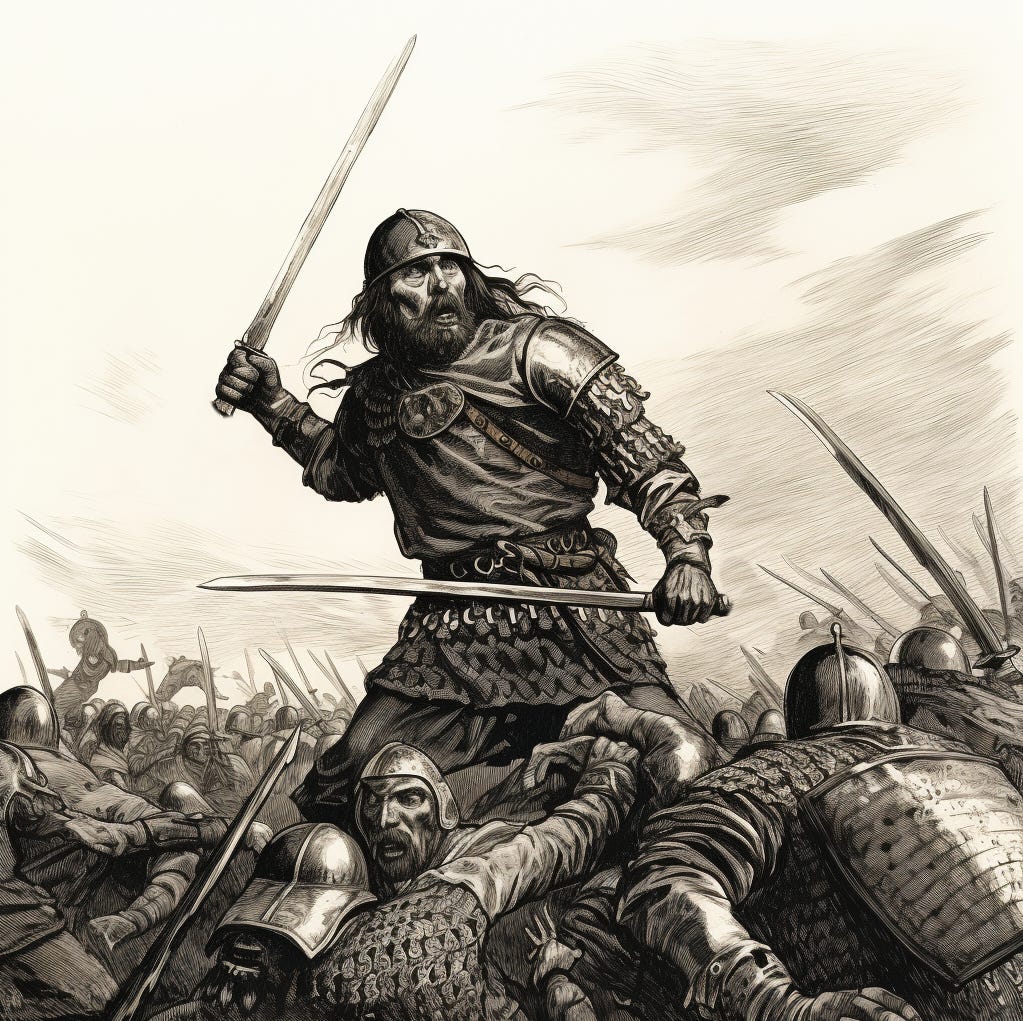Findla More: The Giant Warrior of Clan Farquharson
In the mist-shrouded Highlands of Scotland, where tales of valor and bravery echo through the ages, the legend of Findla More, the Giant Warrior of Clan Farquharson, looms large. His story, woven from the threads of history and lore, captures the essence of Scottish heroism and the indomitable spirit of the Farquharson clan.
The Lineage of a Giant
Findla More, whose name itself suggests his extraordinary stature—More, meaning "great" in Gaelic—was a figure of immense strength and remarkable fortitude. His lineage traced back to the esteemed Shaw of Rothiemurcus, marking him as a descendant of a lineage steeped in the valorous traditions of the Scottish Highlands. But it was Findla More who would etch the Farquharson name into the annals of Highland history with his acts of bravery and leadership.
In an era when Scotland was a tapestry of competing clans and tumultuous allegiances, Findla More emerged as a beacon of strength for his people. His physical prowess was unmatched, tales of his might inspiring both awe and fear in friends and foes alike. Yet, it was not merely his strength that defined him but his keen mind and the loyalty he commanded among his kin.
The Battle of Pinkie and the Fall of a Legend
The most fabled account of Findla More's valor occurred at the Battle of Pinkie in 1547, a conflict that pitted Scotland against England's might in one of the bloodiest days in Scottish history. In this chaotic maelstrom of steel and fire, Findla More stood as a colossus, bearing the Royal Standard of Scotland. It was an honor bestowed upon those of great courage and loyalty, for to carry the banner was to become the heart of the Scottish forces, a beacon around which the hopes and fates of the nation swirled.
As the battle raged, Findla More's towering presence on the field was a rallying point for the Scottish warriors, his banner a symbol of their undying resistance against the encroaching English forces. Yet, fate would not be kind to this giant among men. Amidst the clamor of battle, a cannonball from the enemy's ships struck him down, claiming his life but not his legacy. In that moment, Findla More's spirit transcended mortality, becoming a symbol of sacrifice and endurance for his clan and country.
The Legacy Beyond the Grave
The aftermath of Pinkie was grim for Scotland, but the story of Findla More's bravery became a beacon of inspiration. His descendants, the Clann Fhionnlaidh, would carry not just his name but his legacy of valor across the centuries. His final resting place, in the churchyard of Inveresk, became hallowed ground, known to this day as the "Lang Highlandman's Grave."
Findla More's heroic stand and tragic demise became a poignant symbol for the Farquharson clan, embodying the virtues of courage, loyalty, and sacrifice. His story, passed down through generations, serves as a powerful reminder of the cost of freedom and the price of valor.
The Eternal Warrior of the Highlands
In reflecting upon the life of Findla More, one sees not just a warrior of legendary prowess but a symbol of the enduring spirit of the Scottish Highlands. His legacy is a testament to the power of courage in the face of overwhelming odds, and the deep bonds of loyalty that tie a clan together.
The saga of Findla More enriches the tapestry of Scottish history, offering a narrative of strength and resilience that resonates through the ages. It is a narrative that speaks to the essence of what it means to be Scottish: an unbreakable connection to the land, a fierce spirit of independence, and an unwavering commitment to one's people and heritage. As the mists of time roll over the Highlands, the tale of Findla More, the Giant Warrior of Clan Farquharson, endures. It is a story that speaks to the heart of what it means to be Scottish: resilience, loyalty, and an unwavering commitment to one's people and land. In the echoes of the past, the spirit of Findla More lives on, a timeless embodiment of the Highland soul.





